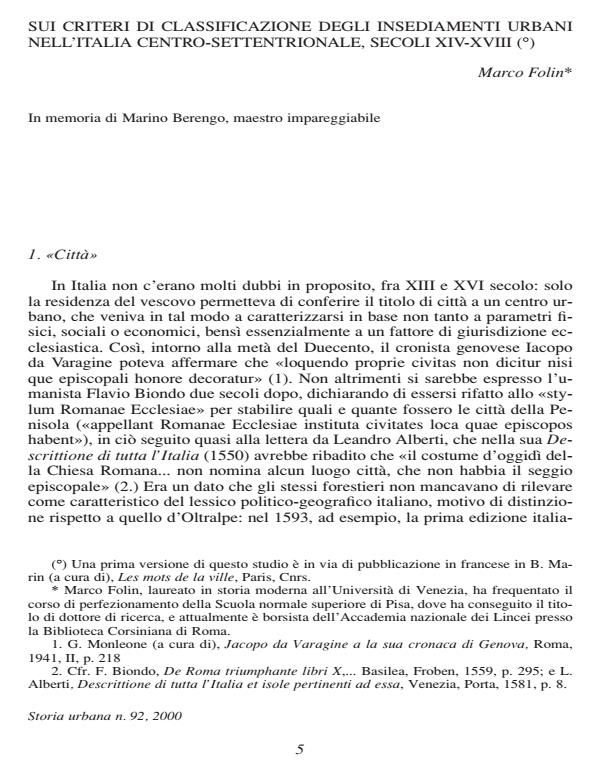Sui criteri di classificazione degli insediamenti urbani nell'Italia centro-settentrionale, secoli XIV-XVIII
Titolo Rivista STORIA URBANA
Autori/Curatori Marco Folin
Anno di pubblicazione 1 Fascicolo 2000/92
Lingua Italiano Numero pagine 19 P. Dimensione file 87 KB
DOI
Il DOI è il codice a barre della proprietà intellettuale: per saperne di più
clicca qui
Qui sotto puoi vedere in anteprima la prima pagina di questo articolo.
Se questo articolo ti interessa, lo puoi acquistare (e scaricare in formato pdf) seguendo le facili indicazioni per acquistare il download credit. Acquista Download Credits per scaricare questo Articolo in formato PDF

FrancoAngeli è membro della Publishers International Linking Association, Inc (PILA)associazione indipendente e non profit per facilitare (attraverso i servizi tecnologici implementati da CrossRef.org) l’accesso degli studiosi ai contenuti digitali nelle pubblicazioni professionali e scientifiche
In Italy, up to the end of the 16th century, and (in many ways) even later, the term città not only indicated an urban settlement, but also, more specifically, a district capital that was ab antiquo the centre of a diocese. The term had a marked political meaning, then, and distinguished those capitals with a certain jurisdictional autonomy from all the other settlements (terre, ville, castelli), which, regardless of their size, were still part of the provinces (the contado) and, therefore, always subject to a higher power. This taxonomy had repercussions on the identity of the municipal elite, who (as the holders of public rights) could only consider themselves «noble» in their own città, which explains why several small Italian towns fought hard to acquire the title of città. In modern times, however, a different kind of urban classification, based on physical and economic factors, gradually came into being, yet the new taxonomy, already enunciated by Botero, was only ratified formally following the French Revolution, when all Italian municipalities were divided into different demographic classes.
Marco Folin, Sui criteri di classificazione degli insediamenti urbani nell'Italia centro-settentrionale, secoli XIV-XVIII in "STORIA URBANA " 92/2000, pp , DOI: